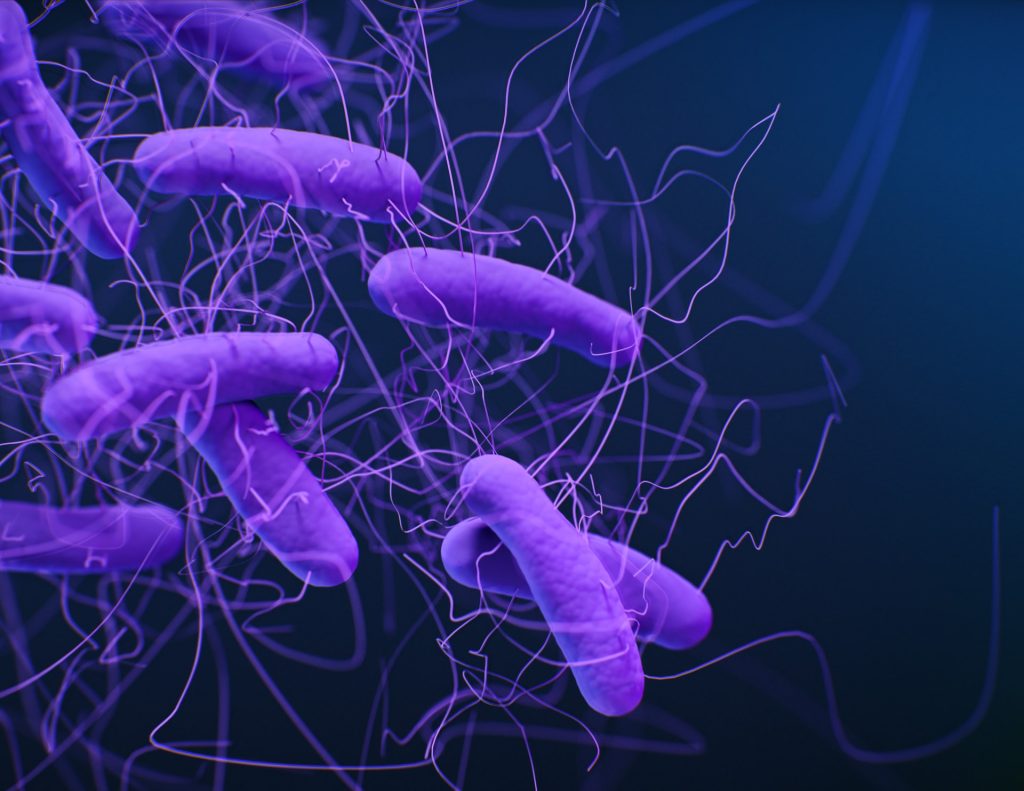Faulty ‘Fight or Flight’ Drives C. Diff Infections

The portion of our nervous systems responsible for the “fight or flight” response can shape the severity of potentially deadly Clostridioides difficile infections, new research from the School of Medicine reveals in Cell Reports Medicine.
The findings suggest that doctors may be able to save patients from the infections – a plague for hospitals and nursing homes – by using drugs to quiet the hyperactive nervous system response, the researchers say.
“Compared to how much we know about immune system influences in C. difficile infections, the field is just scratching the surface in understanding neuronal contributions to disease,” said researcher William A. Petri Jr., MD, PhD, of UVA Health’s Division of Infectious Diseases and International Health. “Newly identifying components of the nervous system that worsen inflammation will allow us to determine potential therapeutic targets and biomarkers for patients at risk of severe disease.”
C. difficile, is a perpetual burden for healthcare facilities. Extensive antibiotic use, particularly among patients who are hospitalised or in nursing care, can allow it to establish dangerous infections. Further, patients who make it through the severe diarrhoea, nausea, fever and colitis C. difficile can cause are not necessarily in the clear: One in six will develop another C. diff infection within eight weeks, according to the federal Centers for Disease Control and Prevention.
The new UVA research reveals the critical role the nervous system plays in severe C. difficile infections. The researchers found that the “sympathetic” nervous system – the branch that responds to dangerous situations – can be a key driver of serious C. diff.
Normally, our “fight or flight” response is helpful for avoiding danger. It helps us respond quickly, improves our eyesight, boosts our strength. It also can stimulate our immune system and help us recover from injury. But in C. difficile cases, the nervous system can have a hyperactive response that becomes part of the problem, and UVA’s new research explains why.
“Neurons are the first responders that coordinate defences against toxic attacks. Sometimes those responders don’t recruit the right size and kind of artillery and that can make things worse,” said researcher David Tyus, a neuroscience graduate student at UVA. “Interestingly, the receptor we identified as important in C. difficile infection [the alpha 2 adrenergic receptor] has also been linked to irritable bowel syndrome. I’m curious to know if there could be a unifying underlying mechanism between the two disease contexts.”
Promisingly, the researchers found that targeting the receptor in lab mice reduced intestinal inflammation and decreased C. difficile severity and mortality. That suggests that, with further research, doctors may be able to take a similar tact to better treat severe C. diff infections in patients. For example, they may be able to surgically remove a portion of nerves in the gut, or they may be able to develop medicines to target the alpha 2 receptor – as Petri and Tyus are attempting to do.
“Our next step is to determine which cells with the alpha 2 receptor are receiving signals from the sympathetic nervous system and play a role in C. difficile-mediated disease,” Petri said. “We are very excited to think about how our findings translate to clinic and how the sympathetic nervous system might play a role in recurrent infection. I hope that this study sets the foundation for future findings of how neurons affect the course of C. difficile infection outcomes.”


